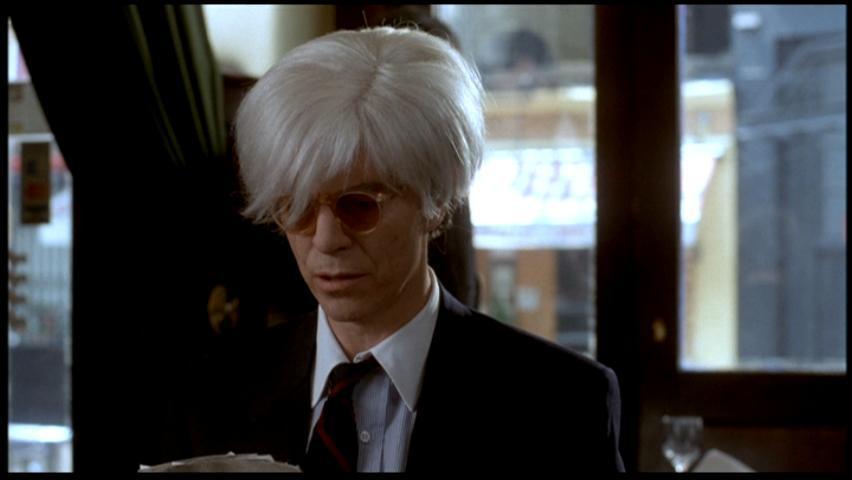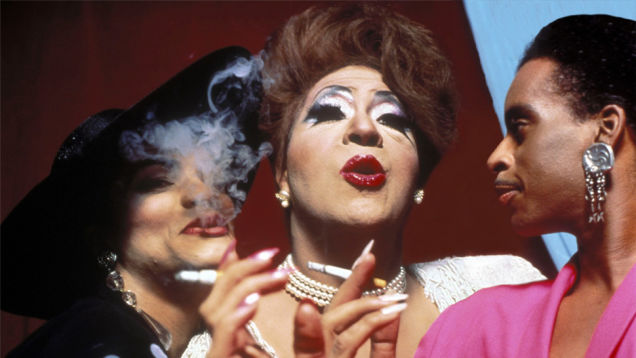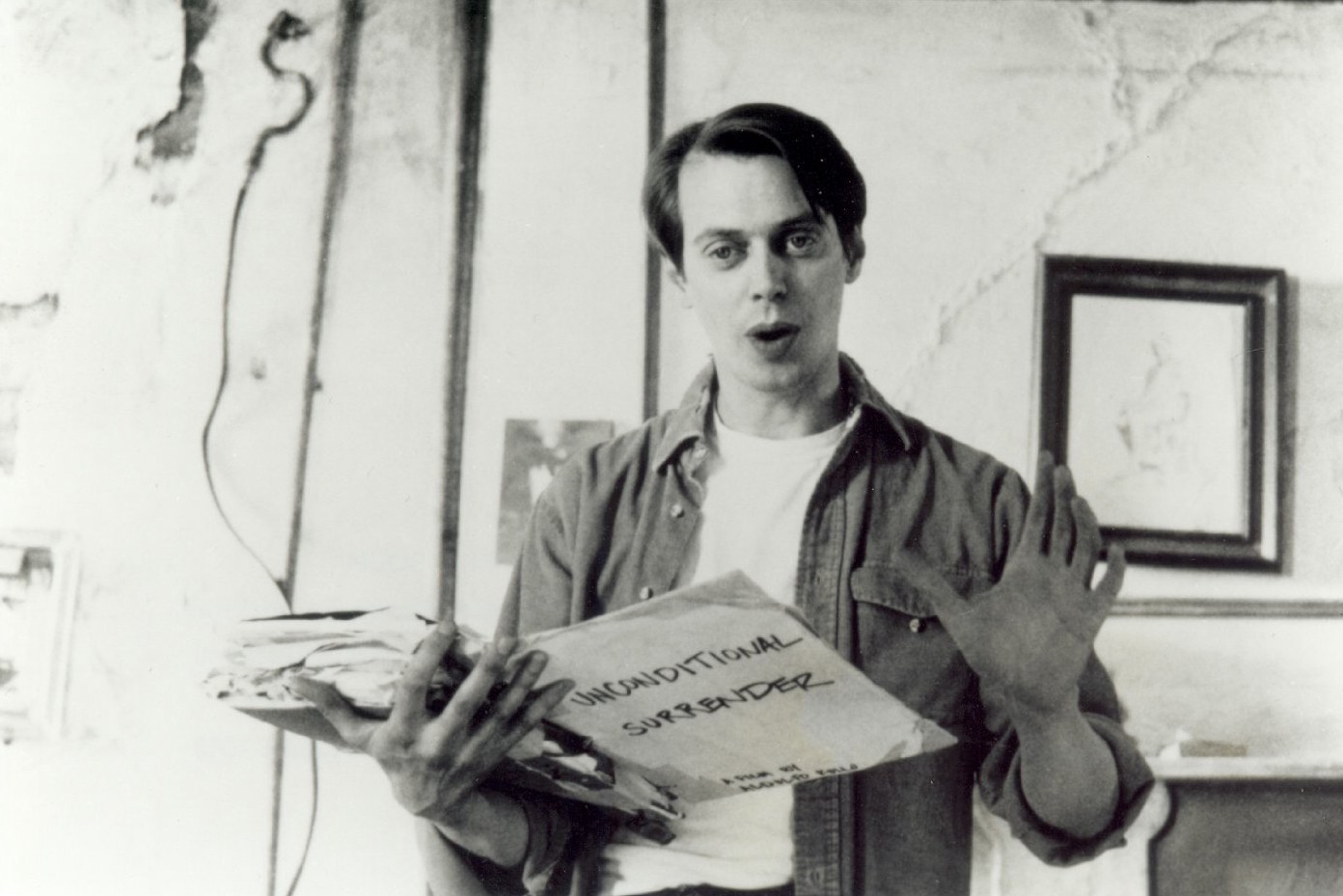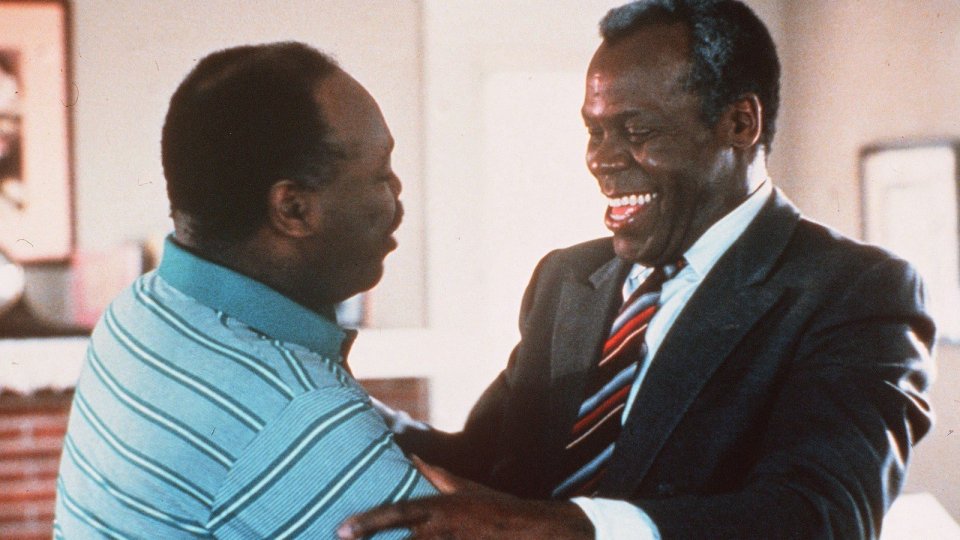6. Basquiat (1996, Julian Schnabel)

The first film from painter Julian Schnabel turns the camera on one of his dear friends, Jean-Michel Basquiat in the 1980s. Coming from one of the king production studios of the 1990s, Miramax; and featuring an all-star cast that’s larger than any other on this list with Gary Oldman, for Schnabel’s stand-in, David Bowie’s Warhol, Dennis Hopper, Parker Posey, plenty of cameos, and of course the starring lead of Jeffrey Wright’s sensitive portrayal of Basquiat.
We get a glimpse of the 1980s New York art world and scene, but more about a young black man trying to create his art in a world that doesn’t quite understand him. From graffiti downtown to the lofts of SoHo, we see his rise in the world and his representation of what true artist can be, by a great painter himself.
It may not be as prolific as Schnabel’s subsequent films, but we see him shaping his craft in this debut, and under-appreciated indie.
7. Paris is Burning (1990, Jennie Livingston)

A documentary filmed in the 1980s New York fashion house scene, but released at the start of the decade, shows a world never captured on film. From the themes of racism, homophobia, poverty, and of course, trans queens, it’s a unique, dance-thumbing doc by Jennie Livingston in the New York underground scene.
Capturing real fashion houses that showcase fashion shows not for the commercial or mainstream but at the heart shows people not accepted by society. Simply by their sexual and social choices by performing who they are, they act their true selves to the fullest in these fashion houses in Harlem and around New York City. With great beats, vibrant costumes, and personalities that are larger than life, it’s nearly impossible to resist this film and the message it sends across.
8. Angela (1995, Rebecca Miller)

Rebecca Miller’s debut is about a young girl trying to purify herself in so many disturbing ways. Ranging from topics of religious battles of good and evil, Satan and God, and magical realism, it’s a tough journey for Miranda Rhyne’s Angela in Miller’s unsympathetic film.
Known for its tough subject matter and a family that makes it difficult for the young Angela to cope, she must venture into the world. Take the scene with Vincent Gallo as a preacher in the river that captures not only the attention but the inspiration of Angela. The tone, context, and feeling of the scene makes us uncomfortable but we continue to watch, much like the entirety of the film.
Miller’s filmography has been sporadic, but her debut definitely shows her filmmaking virtuosos with no compromise and sheering audacity. Hopefully through her more known films, audiences will see this gem.
9. In the Soup (1992, Alexandre Rockwell)

From the filmmaker that captured the true independent spirit of the 1990s with his “Somebody to Love” or “Four Rooms” comes this Steve Buscemi and Seymour Cassel New York tale that is difficult to describe.
From peeping on his desirable next-door neighbor, writing his masterpiece from a crumbling apartment, or dealing with his quick-witted friend Cassel, Buscemi’s loveable loser Aldolpho gets stuck in the schemes around him and in his own dreams.
Shot in a crisp black and white and making the most of minimum locations, Rockwell captures the true cinephile essence from the VHS generation. Take the poster of “Stalker” in the apartment and Buscemi trying to write and finance his film art masterpiece; we don’t care for the subject of the film, but its awareness of trying to make something from nothing. It’s Cassel’s larger-than-life personality that truly takes the scene away with comedic timing and chemistry with Buscemi. It’s a film that doesn’t quite ring at the top from the 1990s, but more audiences should know of this one.
10. To Sleep with Anger (1990, Charles Burnett)

A face of true African-American independent filmmaking from the 1970s, Charles Burnett makes his third feature film about a drifter played by Danny Glover arriving at a distant family’s house in South Central Los Angeles.
The film plays out in a magical realist sense due to its mysticism and folklore, grounded in African-American history and culture. Glover’s character makes the film almost an invasion story where one person changes the thought process and actions of those around him. In short, Burnett knew exactly what he was doing from the opening fire overlap and we are invited to his game.
In the end, this film shouldn’t be missed due to its artistry and paced storytelling from an independent filmmaker we all should admire and learn something from.